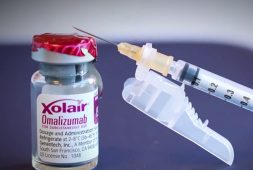Novel Non-Invasive And Cheap Test Works For Difficult-To-Diagnose Oral Cancer In Just 30 Minutes

A groundbreaking advancement in the detection of oral cancer has emerged with the development of a new, inexpensive, and non-invasive test, potentially heralding a significant reduction in mortality rates associated with this form of cancer.
Oral cancers and precancerous lesions in the mouth pose a considerable challenge in early diagnosis, often necessitating costly and invasive biopsies that can be stressful for patients and carry the risk of complications. Moreover, repeated screenings of the same lesion further exacerbate the impracticality of traditional biopsy methods.
However, a team of researchers, spearheaded by a clinician scientist from Case Western Reserve University School of Dental Medicine, has pioneered a revolutionary approach to detect oral cancer and monitor precancerous lesions. This offers a simpler alternative to traditional biopsy techniques.
Their breakthrough hinges on a novel scoring system tied to the levels of two proteins present in cells that can be easily collected from suspicious oral lesions during routine dental clinic visits or examinations by ear, nose, and throat specialists.
The results can be obtained within thirty minutes.
Their discoveries rely on a scoring system associated with the levels of two proteins found in cells that can be collected from suspicious oral lesions at dental clinics or by ear, nose, and throat specialists.
One protein, human beta defensin 3 (hBD-3), exhibits heightened expression in early-stage oral cancer, while the other, hBD-2, remains low or unaltered.
The ratio of these proteins at the lesion site compared to the ratio at the normal site generates a score known as the beta defensin index (BDI).
A score exceeding a predefined threshold suggests the presence of cancer; scores below indicate otherwise. Protein level determination and BDI quantification are routinely performed in a laboratory.
“When we first discovered hBD-3, we saw it acted as a ‘good guy,’ involved in wound-healing and killing microbes,” said the study’s lead researcher Aaron Weinberg, chair of the Department of Biological Sciences at Case Western.
“Imagine our surprise when this Dr. Jekyll turned out to be Mr. Hyde,” he said. “We found it was not only promoting tumor growth but was overexpressed in the early stages of the disease, while another member, hBD-2, wasn’t changing.”
Head and neck cancer, predominately oral cancer, accounts for approximately 90% of cases, making it the seventh most common malignancy globally. Annually, it leads to around 640,000 new cases and 350,000 fatalities worldwide.
The study’s patented lab-based approach has the potential to significantly reduce biopsies in primary care settings by 95%, offering clinicians precise guidance on which patients truly require further investigation. Dr. Weinberg highlighted the adaptability of the test, noting its applicability in regions where oral cancer prevalence is high and pathology services are inadequate or unreliable.
The promising outcomes of the research, published on March 4 in the journal Cell Reports Medicine, have catalyzed the development of a device capable of directly measuring the protein ratio, suitable for use in clinical settings. Collaborating with Case Western Reserve’s Technology Transfer Office, efforts are underway to secure a patent for the device, paving the way for potential manufacturing and clinical validation in the near future.



